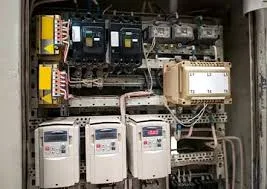Key Takeaways
by: Mark Marar | Colorado Field Services Manager
As 2025 unfolds, Generator Source is seeing more generator failures tied to voltage switches, especially automatic transfer switches (ATS), which are essential for smooth power transitions. Common issues include controller malfunctions, faulty wiring, blown fuses, improper installation, and voltage monitoring failures — all of which can disrupt stability and damage equipment. Proactive measures like routine inspections, certified installation, surge protection, and operator training are critical to preventing costly downtime. Generator Source emphasizes that addressing ATS reliability is one of the most important steps businesses can take to safeguard operations this year.
- Why ATS Matters: Regulates power transfer and prevents damaging voltage fluctuations during outages.
- Common Failures:
- Controller failures (missed transfers, outages)
- Wiring and connection issues (voltage drops, outages)
- Blown fuses (interrupted supply)
- Improper installation (instability, unsafe conditions)
- Monitoring failures (overload, delayed transfer)
- Prevention Best Practices:
- Regular inspections of wiring, fuses, and controllers
- Professional ATS installation per UL1008 standards
- Surge protection to safeguard controllers
- Operator training with proper diagnostic tools
- Real-time monitoring via IoT integration
- Bottom Line: Reliability in 2025 depends on proactive maintenance and expert support to keep ATS systems ready when outages occur.
As we progress into 2025, Generator Source has noted an increasing prevalence of challenges related to generator maintenance, particularly with voltage switches such as automatic transfer switches (ATS). These critical components ensure seamless power transitions during outages, yet industry data and client reports reveal a rise in failures that compromise voltage stability and threaten equipment integrity. With generators playing an indispensable role across industries like healthcare, manufacturing, and technology, resolving generator voltage switch issues is a priority. This guide from Generator Source offers expert insights and practical solutions to maintain dependable backup power systems.
What Are Voltage Switches and Why Do They Matter?
Voltage switches, notably automatic transfer switches (ATS), regulate the shift between utility and generator power. They monitor voltage and frequency to deliver consistent electricity to critical equipment. When operating correctly, an ATS prevents fluctuations that could harm sensitive systems. However, malfunctions in these switches can lead to significant operational disruptions, a concern Generator Source frequently addresses for clients in 2025.
Common Voltage Switch Issues
Based on recent industry reports and operator discussions, the following are the most prevalent issues affecting voltage switches in generator operation:
| Issue | Description | Impact on Voltage |
|---|---|---|
| Controller Failures | The ATS controller fails to monitor voltage or initiate power transfers, preventing the generator from starting or stopping correctly. | Leads to power outages or failure to switch back to utility power. |
| Wiring and Connection Issues | Loose, damaged, or incorrect wiring in the ATS disrupts power delivery. | Causes voltage drops or complete loss of power to the load. |
| Blown Fuses | Fuses in the ATS or generator circuit blow, interrupting the power supply. | Prevents voltage delivery, resulting in power interruptions. |
| Improper Installation | Incorrect ATS setup leads to operational errors or unsafe conditions. | Causes voltage instability or system failures. |
| Voltage Monitoring Failures | The ATS fails to accurately monitor voltage, delaying or preventing transfers. | Results in power loss or generator overload due to unstable voltage. |
Addressing Controller Failures
Controller failures rank among the most disruptive generator voltage switch issues. These can stem from electrical surges, aging parts, or defects. Generator Source advises regular ATS controller testing and surge protection to mitigate risks. Should a failure occur, our certified technicians can swiftly diagnose and repair the issue.

Preventing Wiring and Fuse Problems
Wiring faults and blown fuses often arise from substandard installation or neglected maintenance. To prevent these, Generator Source recommends professional ATS installation and routine inspections for wear or corrosion. Replace blown fuses with the correct rating and address root causes. Learn more in our generator maintenance guide.
How to Prevent Generator Voltage Switch Issues
Proactive measures are key to avoiding voltage switch failures. Generator Source suggests the following best practices:
- Routine Inspections: Monthly checks of wiring, connections, and controllers to identify issues early.
- Certified Installation: Professional setup adhering to standards like UL1008.
- Operator Training: Equip staff to troubleshoot voltage problems using tools like volt meters.
- Technology Integration: Use real-time monitoring solutions—see our IoT tools.
- Surge Protection: Install protectors to shield controllers from spikes.
Conclusion: Tackling Generator Voltage Switch Issues in 2025
With generator technology advancing, staying ahead of voltage switch challenges is critical. Regular maintenance, expert installation, and training can significantly reduce the risk of generator voltage switch issues. Generator Source is committed to supporting you with top-tier advice, services, and solutions to ensure uninterrupted power in 2025 and beyond.

